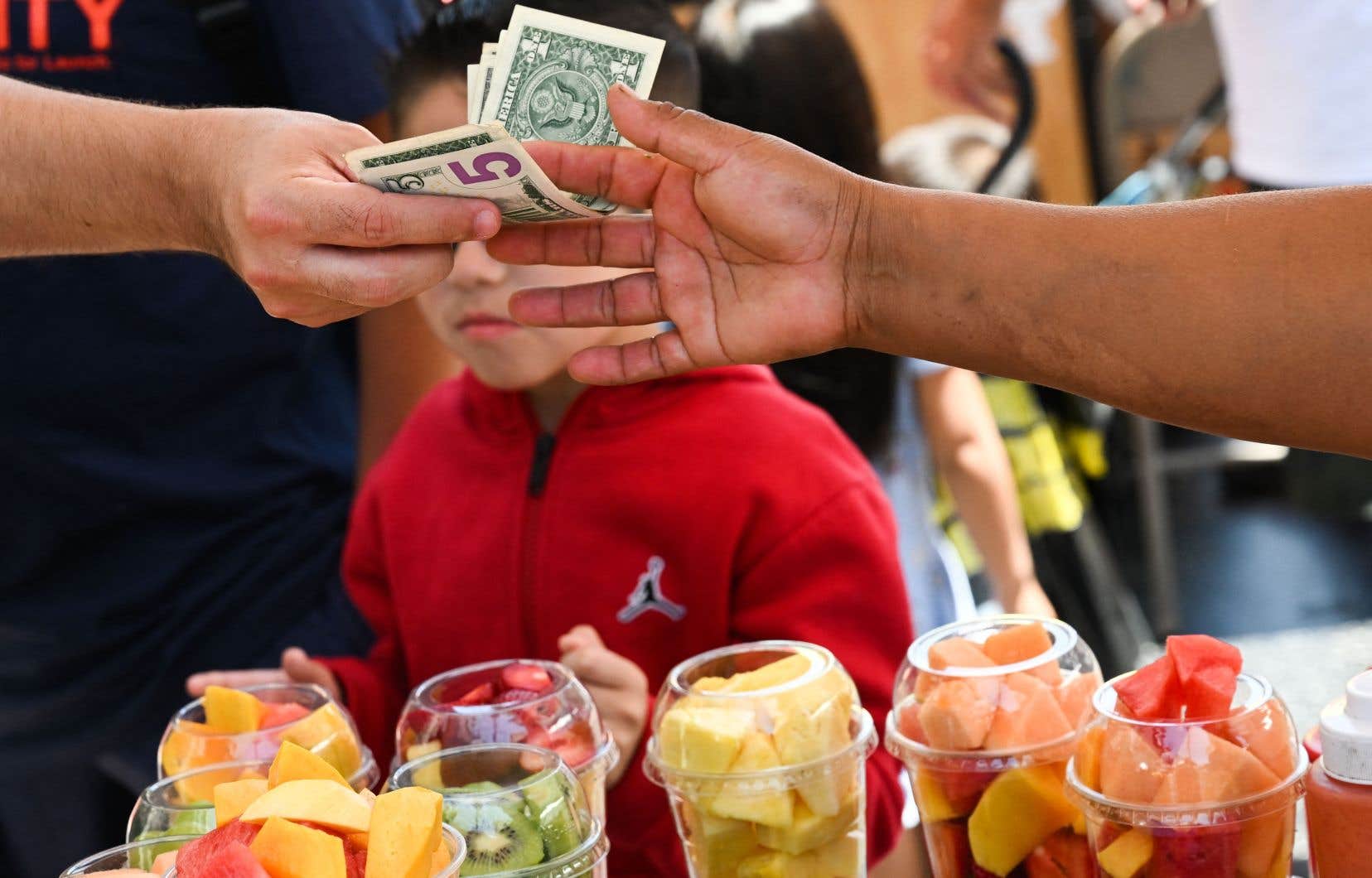Growth in American economic activity doubled in the third quarter, driven by household consumption, a new snub to the recession promised for months, and an additional argument for Joe Biden, campaigning for his re-election.
U.S. gross domestic product (GDP) growth stood at an annualized 4.9% for the three months from July to September, according to the Commerce Department’s first estimate, released Thursday.
This pace is even stronger than the 4.0 to 4.7% expected by analysts, according to several consensuses.
“I never believed that we would need a recession to bring down inflation,” responded President Joe Biden in a press release.
As usual, the Democrat, who hopes to be re-elected to the White House in 2024, attributed the merit of this solid growth to the measures put in place since his election: “It is a testimony to the resilience of American consumers and workers , supported by Bidenomics”, nickname given to its economic policy.
American households, in fact, continued to spend, thus fueling the main engine of the American economy.
However, they had to devote a large part of their budget to expenses for electricity, health care and medicines, financial services and insurance. They also bought computer equipment and traveled.
“Real estate investment has also rebounded,” notes Rubeela Farooqi, chief economist for High Frequency Economics, in a note.
Degradation in sight
The United States favors growth at an annualized rate, that is to say the growth that would be achieved over the entire year if it continued at the same pace for the following three quarters.
Other advanced economies simply compare each quarter to the previous, resulting in 1.2% for the US in Q3.
This is “explosive” growth, notes Kathy Bostjancic, chief economist at the Nationwide insurance company.
Already in the second quarter, the expansion of the American economy had surprised by its strength, at 2.1% at an annualized rate, and 0.5% compared to the previous quarter.
Will the much-heralded slowdown finally arrive?
Growth is expected to continue in the fourth quarter, but at a “significantly” slower pace, predicts Rubeela Farooqi, as rate hikes “are expected to have a greater impact on consumers and businesses in the future”.
The chief economist of the Real Estate Bankers Association (MBA), Mike Fratantoni, also expects the situation to deteriorate, stressing that “savings accumulated during the pandemic continue to decline and wages are increasing more slowly “.
Threat of “shutdown” again
Inflation has been reducing the purchasing power of American households for two years. And the remedy could turn out to be even worse, since the American central bank (Fed) wants to voluntarily slow down growth, to ease the pressure on prices.
To do this, it has raised its rates 11 times since March 2022. They are now at their highest since 2001. Result: the cost of credit has soared, and purchases have been slowed down.
Not enough so far, however, to stop the growth.
Because Americans have jobs, and therefore income. And the wealthiest households still have part of the savings amassed during Covid aside.
The famous “soft landing”, which would slow inflation without causing the unemployment rate to soar or plunge the economy into recession, now seems within reach.
But once again, the United States is under threat of a paralysis of the federal state, the “shutdown”, from November 17, if the newly elected head of the House of Representatives, Mike Johnson, does not succeed. to pass a budget for the federal administration.
Inflation in September was 3.7% year-on-year, according to the CPI index published by the Labor Department. The PCE index, the Fed’s preferred barometer, will be released on Friday.
In 2022, GDP growth in the United States had slowed to 2.1%, after experiencing its highest rate in 2021 since 1984 (5.9%). And 2020 saw the biggest decline in GDP since 1946 (-3.5%), with two months of recession due to Covid-19.
